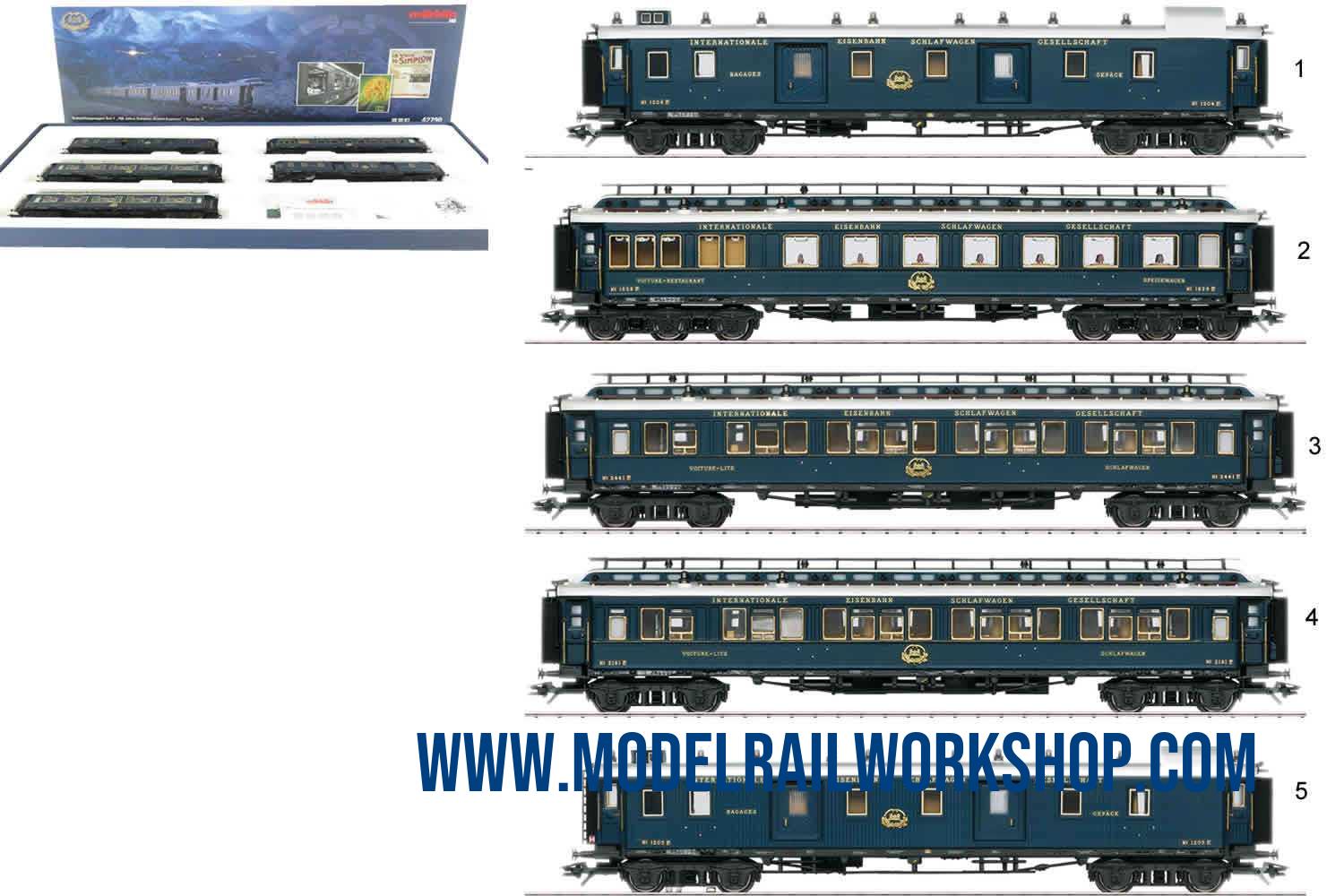
| KEY DATA | |
|---|---|
| Product Name | 42790 Luggage wagon - Orient express |
| Object type | Car-Passenger |
| Product Line | Märklin |
| Era | 1925-1945 (II) |
| Manufactured years | 2019-2020 |
| Type of housing | Synthetic |
| Length | 117.5 cm |
| Technology | MFX |
| Railway company | FR-CIWL (Orient Express) Compagnie Internationale des Wagons-Lits |
| Märklin RRP (Year) | 560€ (2020) |
| Koll valuation (Year) | 560€ (2022) |
| Url to Märklin | Klick to GoTo www.maerklin.de |
| No | Obj.No | Obj.txt | Category | Description |
|---|---|---|---|---|
| 42790-1 | 1205 | Compagnie Internationale des Wagons-Lits et des Grands Express Européens | 4a | Baggage car - Blue - 22.6 cm - MFX |
| 42790-2 | 1828 | Compagnie Internationale des Wagons-Lits et des Grands Express Européens | - | Restaurant car - Blue - 24.3 cm |
| 42790-3 | 4221 | Compagnie Internationale des Wagons-Lits et des Grands Express Européens | - | Sleeping car - blue - 24.3 cm |
| 42790-4 | 2181 | Compagnie Internationale des Wagons-Lits et des Grands Express Européens | - | Sleeping car - blue - 24.3 cm |
| 42790-5 | 1204 | Compagnie Internationale des Wagons-Lits et des Grands Express Européens | 4a | Baggage car - Blue - 22.6 cm - MFX |
| Description | |
|---|---|